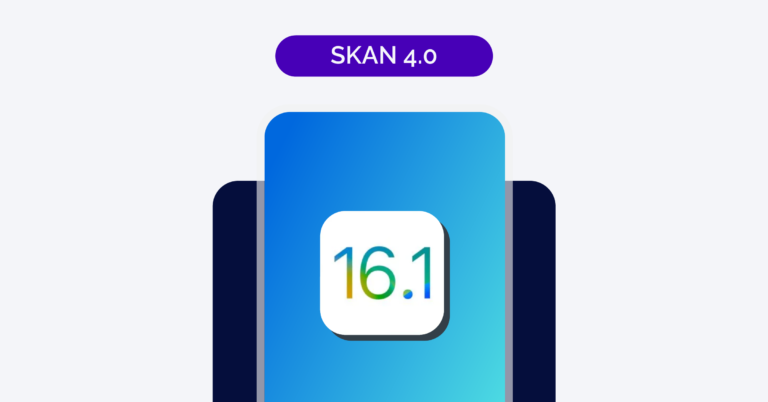These days almost ubiquitously, when I sit with a customer, our conversation ends up coming back to one of the single biggest challenges faced by marketing professionals today: achieving effective measurement in a post-privacy era.
We are immersed in ever-changing platform privacy policies like Apple’s App Tracking Transparency (ATT) and Google’s looming Privacy Sandbox, not to mention confusing and sometimes paradoxical legislation like the EU’s shifting interpretation of GDPR. Not only are they complex, but they upend the paradigm of measurement, the lifeblood of justification advertising investment.
It’s a complex and shifting landscape, but marketing professionals today don’t have the luxury of waiting for rules and technology to solidify before acting. An analogy I’ve heard uttered in many different flavors recently is: “we’re swapping out the engine of a car while driving down the freeway.” In the changing realities of our time, marketers are struggling with the new reality of measurement and how to take action.
So, how do you make the shift into a privacy-centric future?
Understanding your new reality
One of the biggest challenges is simply understanding the outcomes of the increasingly complicated landscape changes, so let’s start with the basics.
User-level marketing data is going away:
Even if you’re collecting user opt-ins — and have a decent opt-in rate — privacy changes mean you’ll still lack complete user-level data tied to marketing campaigns. Simply put: you can no longer accurately tie a single app user to an advertising campaign. Because organizations rely on user-level data so heavily, a fundamental organizational change will need to be made.
It may be alluring to search for a “quick fix” or a temporary workaround to preserve the continuity of user-level data — fingerprinting is good example of this temptation — but user-level fixes won’t last and your organization will be even further behind when the workaround fails. Your organization will need to learn to leverage aggregate data — measurement outcomes that aren’t based on user-level data. In most cases, aggregated reporting is the only approved method for privacy-centric reporting. This means your reporting will be limited to aggregated counts, rather than individual performance.
There will be signal loss:
Even with aggregated data, privacy-centric measurement will often require obfuscation of user performance to prevent identifying individual users through inference. Therefore, when viewing a limited set of users, measurement signals will be suppressed. Depending on your advertising campaigns, this could mean privacy thresholds will limit your abilities to see installs or post-install activity. This will lead to gaps or holes in some of your reporting when your campaigns fail to appropriately protect user identities. How you set up reporting and run your advertising will dictate where those holes exist.
Performance will be defined and measured by you:
A reality that isn’t apparent at first blush is that privacy-centric reporting limitations — largely driven by the ad platforms — will make tracking performance of your campaigns less straightforward. User earnings or other campaign KPIs will need to be encoded into new framework requirements and will be defined and implemented by you. For more specific strategies, see Strategies for Setting Optimal SKAN 4.0 Conversion Values.

Even when you have a full understanding of your new reality, it’s unclear what exactly you can do next. How do you measure marketing effectively in a post-privacy world?
Start at the end
Privacy will nullify the outcome of a reporting system that builds its foundation on user-level data. But the outcome of your reporting is still attainable. The key for incorporating aggregated data into your workflows is to determine your product’s end-goal first and use that to then determine how you will utilize the privacy framework.
One of the most common desired outcomes of marketing reporting is campaign revenue earnings. A common fear is the loss of reliable campaign revenue attainment used for financial reporting and advertising justification. For many marketers, the concept of tying aggregated reporting via limited signal to a financial report with any level of certainty is daunting and unfeasible. However, while achieving confidence with privacy-centric measurement is more difficult, it is still possible. You’ll need to overcome three fundamental challenges:
- Measurement will (continue) to be estimated: Your campaign measurement probably relies on some aspect of revenue attainment — or at least a proxy from another KPI. While your current methodology might give you relatively confident results, those in the throes of constructing their data pipeline know it’s not a perfect signal. In short, you already lean on estimations. As you progress, you’ll expand your reliance on estimations and will likely need to change some key behaviors to refine and increase the strength of these signals.
- Less signal will reduce your measurement confidence: As you construct the concept of performance measurement, you’ll need to build in the concept of estimation and confidence in your reporting outcomes. You can increase your confidence by using opt-in data, or subtracting organic channels and using behaviors of those left as a proxy for macro paid baselines.
- Measurement will need to be calculated early: A shared difficulty brought on by privacy measurement is the need — and best practice to increase signal density — for determining the measure of user value quickly, ideally within 24 hours. You’ll need to determine proxy methods for estimating user measurement early.
Managing expectations
Eric Seufert outlines another problem that hangs over marketers in making transitions to privacy-centric measurement:
“These models cannot be connected to an existing marketing workflow or plugged into existing reporting infrastructure…. A mistake I see teams make in transitioning to [modeled] measurement is thinking that the change is akin to plugging a new monitor into an existing workstation: the visuals will remain the same, they’ll just be rendered by new machinery. This isn’t the case.”
It’s likely prudent at this stage to point out marketing teams aren’t siloed in dealing with the outcomes of these issues. One of the biggest concerns I’ve fielded recently is marketing teams struggling with how to relay the condensed version of the new reality to other departments. How do you best explain to finance you can no longer confidently relay revenue earnings from your ad budgets?
There are three main concepts your supporting teams will need to conceptually recognize:
- You’ll have signal loss and as a result, will lose confidence in your performance measurement. Revenue, campaign KPIs, even counting app installs will require you to learn new methods to increase signal density and measurement reliability.
- You’ll rely on modeled data. The future of privacy-centric reporting will require your measurements to be based on estimates calculated from a limited signal. Changing your buying and measurement methods is necessary to increase confidence in your estimations.
- This isn’t you; it’s a new industry reality. One important concept that needs to be understood is these changes aren’t brought on by something your team has or hasn’t done. The entire industry is struggling with these changes, and these changes aren’t going to go away. As the frameworks and tools mature, the measurement will get easier, but this will likely be measured in years — not months.
The reality is all teams — marketing, finance, and management — will need to face the new reality that privacy restrictions limit the ability to measure user-level revenue performance back to campaigns. The earlier you can share the changing paradigm with other departments — along with your plan to mitigate the uncertainty — the more comfortable your peers will be with the changes.
Implementation
The first aspect of your new measurement is to develop the strategy, or methodology, for your new measurement. A well-thought-out plan will fit into your existing measurement workflows and cause limited friction and strife with internal stakeholders. Often this will require input from analytics or data teams to help choose the optimal inputs you’ll use for your measurement. We’ve seen the following steps work well for teams:
- Choose your optimal methods for measuring for user-value. Sit with your teams, decide what you’d like to measure as an output, what’s possible, and how to go about maximizing your confidence in outputs.
- Alter campaign-buying strategies to increase signal density. Depending on your measurement goals and your buying strategies, this will likely mean reducing your campaigns to drive maximum signal over user-install thresholds.
- Stay flexible and continue to iterate. From exploring new methods of reporting on user performance to introducing incrementality testing to validate your spend measurement, don’t expect your first iteration to work perfectly. Expect and plan for your measurement methods to need refinement and ongoing validation.
After strategy comes connecting the data pipelines and workflows. Obviously, there will be some on-device work to implement the new frameworks. For ATT, this is implementing the latest iteration of SKAdNetwork (SKAN). It shouldn’t be overlooked that, in some cases, information on the user performance can be off-device, meaning you’ll need to get signal back to the device if it’s important to the user’s value measurement. For instance, if you’re an e-commerce business and the user can buy on the website, you’ll need to get that purchase signal back to the device to be routed through privacy-centric measures.
It’s worth considering that your first try won’t likely be your best attempt. Having seen a number of implementations, I can confidently say a setup that is simple, dynamic, and available now is better than a perfect, fixed solution later. Very likely, you’ll need to iterate on your measurement methods, both for a better understanding of measurement but also to facilitate changing future technologies. Not only will an iterative approach help you increase the efficacy of your measurement, but it will also allow flexibility for impending, inevitable policy and technology changes.
In closing, leveraging aggregate data is simply one of the many hurdles you’ll face in moving to the privacy-centric future of marketing and advertising measurement. Take solace that you’re not alone in this change. Lean on your vendors and peers for best practices and advice. At Branch, we regularly host industry roundtables to stimulate practical, usable peer-to-peer advice.
If you’re already a Branch customer, reach out to your account team to share your goals and ask for best practices on future enhancements, keep us involved with questions, concerns, and what you’d like to see in future product releases to help increase your effectiveness. Above all, don’t avoid the complexity. The shift to privacy isn’t a down quarter that can be ignored and pushed through. Reduced signal is here to stay and the most effective marketers of tomorrow will start with planning today.






















